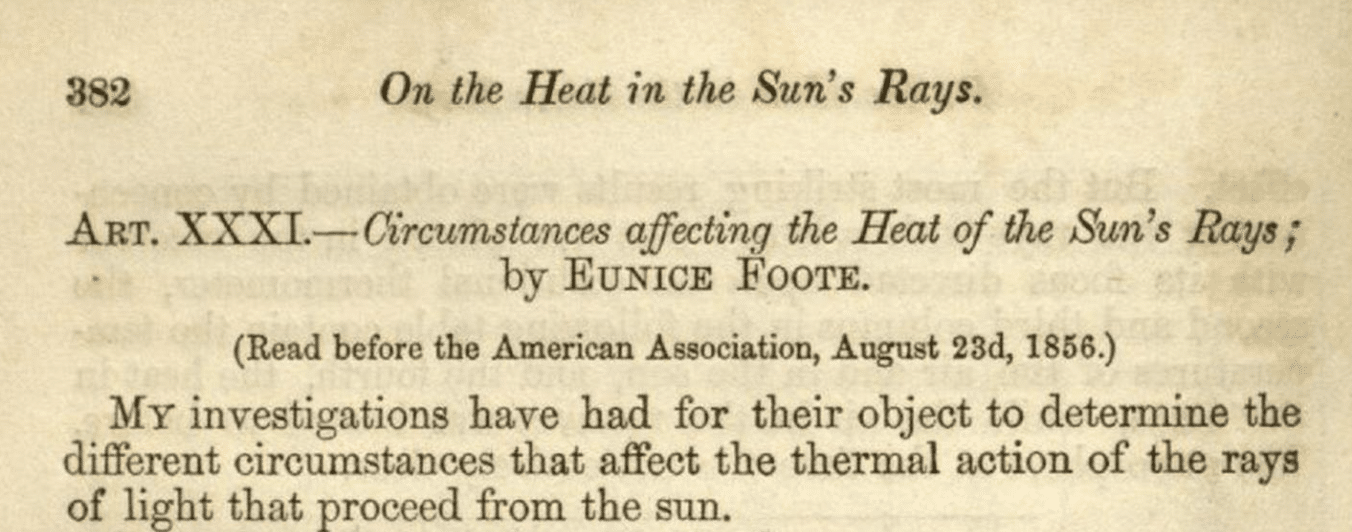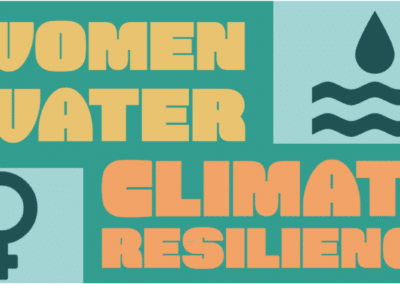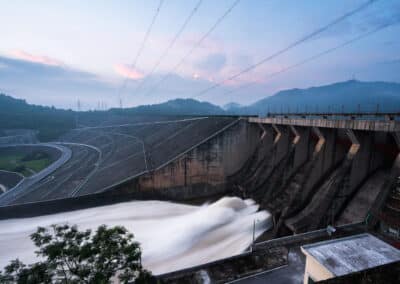by Lauren Schmeisser
When we think of pioneers in climate science, names like Svante Arrhenius, Guy Steward Callendar, and Charles Keeling may come to mind. However, there is one scholar that is often overlooked – Eunice Newton Foote.
Eunice Foote was born in 1819 and made groundbreaking contributions to climate science throughout the mid-19th century. Foote was a woman ahead of her time. A self-taught scientist who conducted experiments in her home laboratory, her work on the relationship between carbon dioxide and temperature helped lay the foundations for our current understanding of climate change.
In 1856, Foote presented a paper to the American Association for the Advancement of Science (AAAS) titled “Circumstances Affecting the Heat of the Sun’s Rays.” In this paper, Foote described an experiment she conducted in which she filled glass cylinders with different gasses and measured the temperature increase when exposed to sunlight. She found that carbon dioxide gas had the greatest heating effect, and she concluded that “an atmosphere of that gas would give to our earth a high temperature.”

Foote’s findings were groundbreaking and were influential in the work of many climate scientists after her. Unfortunately, Foote’s work was largely ignored by her contemporaries, as she was a woman in a field dominated by men. Despite her accomplishments, she was unable to present her findings to the full assembly of the AAAS, as women were not allowed to attend its meetings at the time. Her paper was instead read by a male colleague. For over a century her work and name was left missing from the historical timelines of climate science. However, her contributions to the field have recently been brought to the spotlight, and she is now celebrated as a pioneering figure in the field. During this Women’s History Month, we are taking the time to further honor and acknowledge her legacy.
Foote’s work has taken on even greater significance in recent years as the world grapples with the effects of climate change. Her experiments and conclusions were conducted over 160 years ago, but they remain relevant today as we work to understand and mitigate the impact of rising carbon dioxide levels on our planet.
We now know that the effects of carbon dioxide in the atmosphere extend well beyond simply increasing global average temperatures. Those changing temperatures have a significant impact on the water cycle and the availability of freshwater resources. Rising global temperatures have already shifted precipitation patterns and will continue to do so, with more frequent droughts in some regions and more intense rainfall events in others. Changing precipitation affects the quality and quantity of freshwater available, thus impacting human water use and ecosystem health.
Climate change not only shifts water supply but also demand, as use for agricultural irrigation, industry, and household needs rise. This puts further pressure on already scarce water resources. It is now more important than ever to understand water’s complex and rapidly changing role in our environment and our lives. The Water Intelligence solutions provided by True Elements deliver a clearer understanding of water quality and watershed dynamics, allowing stakeholders to make informed decisions about current and future risk and mitigation strategies.
As we gain a clearer picture of the impacts of climate change on water supply and the adaptation solutions at our fingertips, we can look back with gratitude on the many layers of understanding afforded to us by climate scientists over the past century and a half. We owe a debt of gratitude to scholars like Eunice Foote who made a lasting impact on our understanding of our planet’s climate.




